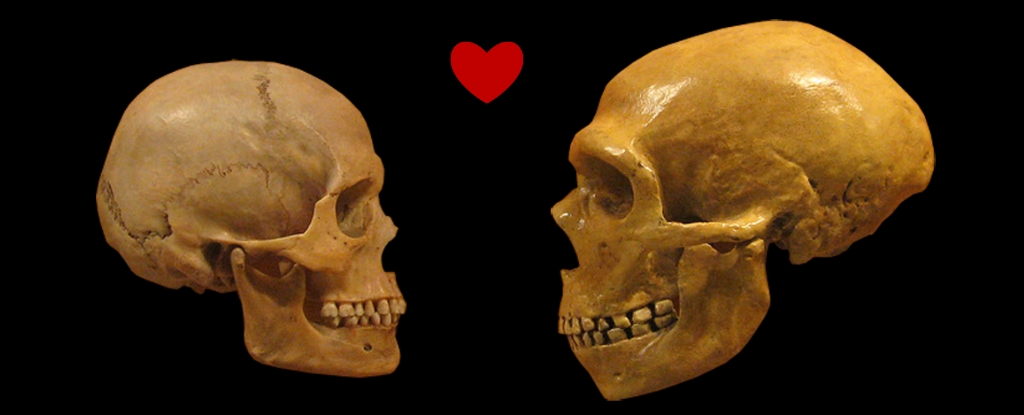Neanderthals and modern humans had a fascinatingly intertwined past. We know, from studies of our own DNA, that when the paths of the two species crossed, things could get more than a little steamy.
Traces of Neanderthal DNA in our own genetic codes suggests that mingling and breeding happened more than once; so intimate has the relationship been that some scientists think we might need to stop classifying Neanderthals as a separate species. There are distinct orca groups with way less interaction.
Orcas aside, what we don’t really have a clear idea about is the extent of the human-Neanderthal shenanigans. And most of the studies performed to date have been about the gene flow from Neanderthals to humans.
It makes sense, because we have a lot of human genetic material on hand to analyze, and considerably less Neanderthal DNA. But a team of geneticists led by Liming Li of Princeton University has found a way to trace the flow of genetic material from humans to Neanderthals – by making a very close analysis of the Neanderthal DNA found in modern humans.
Their results reveal a long, repeated association between the two groups of hominins, dating back to as long as 250,000 years ago. And, the researchers found, the Neanderthal DNA that shows traces of this previous relationship has led scientists to overestimate the overall population size of Neanderthals, by around 20 percent.
“The smaller estimated population size and inferred admixture dynamics,” Li and his colleagues write in their paper, “are consistent with a Neanderthal population that was decreasing in size over time and was ultimately being absorbed into the modern human gene pool.”
There isn’t a lot of Neanderthal DNA hanging around from actual Neanderthals, since they disappeared around 40,000 years ago. Tests on extant genetic material haven’t yielded evidence of human DNA. But the genome of mostly everyone in the world has at least a little bit of Neanderthal DNA, from 1 to 4 percent.
Li and his colleagues conducted their study using a database known as 1000 Genomes, an international database of modern human genomes. They used a method devised at Princeton called IBDmix to identify Neanderthal DNA in 2,000 modern human genomes, and extract information from that DNA.
They were looking for a property known as heterozygosity, a parameter that can be used to gauge genetic diversity. High heterozygosity means high diversity; low heterozygosity means the opposite. So if a sequence of Neanderthal DNA displays high heterozygosity, it means that DNA could have come from an individual produced by interbreeding with modern humans.
They found those traces in Neanderthal DNA from African individuals. Neanderthal DNA found in non-African individuals did not have the same signature. This allowed the researchers to identify two specific pulses of human to Neanderthal gene flow, one around 250,000 to 200,000 years ago, and a second around 120,000 to 100,000 years ago.
They were also able to estimate the amount of human DNA present in some lineages of Neanderthals. In particular, the Vindija and Altai Neanderthals could have had around 2.5 percent and 3.7 percent human DNA mixed in with their genome, respectively. This means we may have overestimated Neanderthal population sizes, a finding that, in turn, reveals more about the Neanderthal extinction.
A 2022 paper found that the Neanderthal population was absorbed into that of Homo sapiens. The research of Li and his colleagues validates this notion, and several other curious findings, such as the disappearing Neanderthal Y chromosome.
“The assimilation of Neanderthals into modern human populations as they spread throughout Eurasia would have effectively increased the size of modern human populations while simultaneously decreasing the size of an already at-risk Neanderthal population,” the team writes.
“Our finding that the effective population size of Neanderthals was likely even smaller than previously estimated would only hasten the assimilation process, and the replacement of the Y chromosome and mitochondrial DNA in late Neanderthals by modern humans may have marked an irrevocable path toward the disappearance of one of the few remaining hominin lineages that coexisted with modern humans.”
The research has been published in Science.





